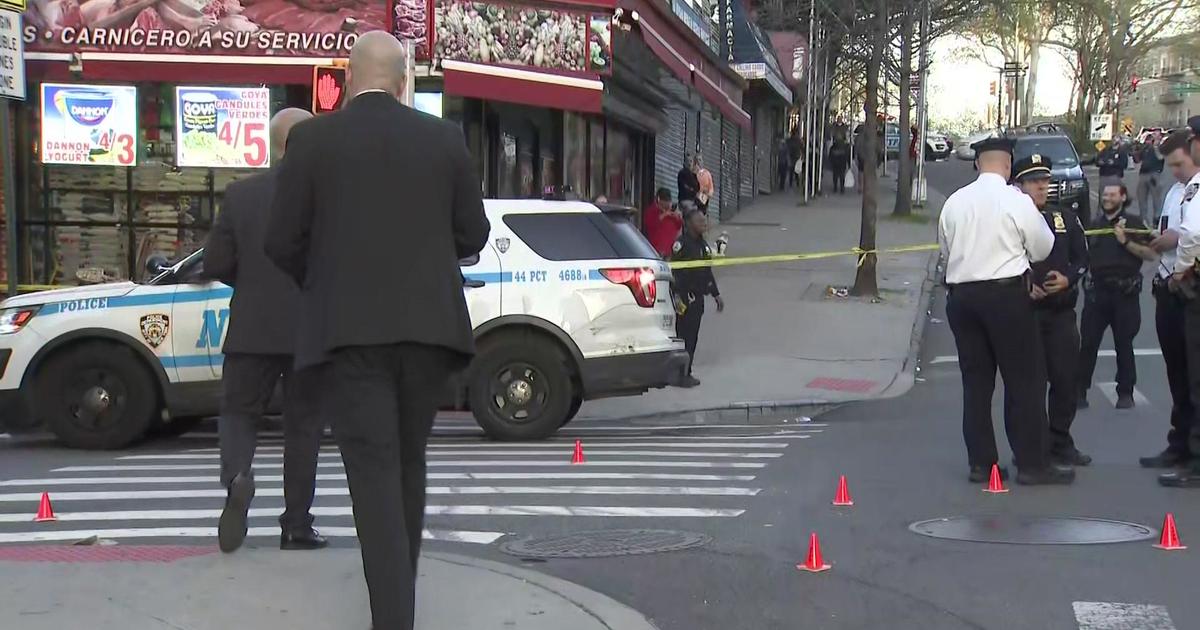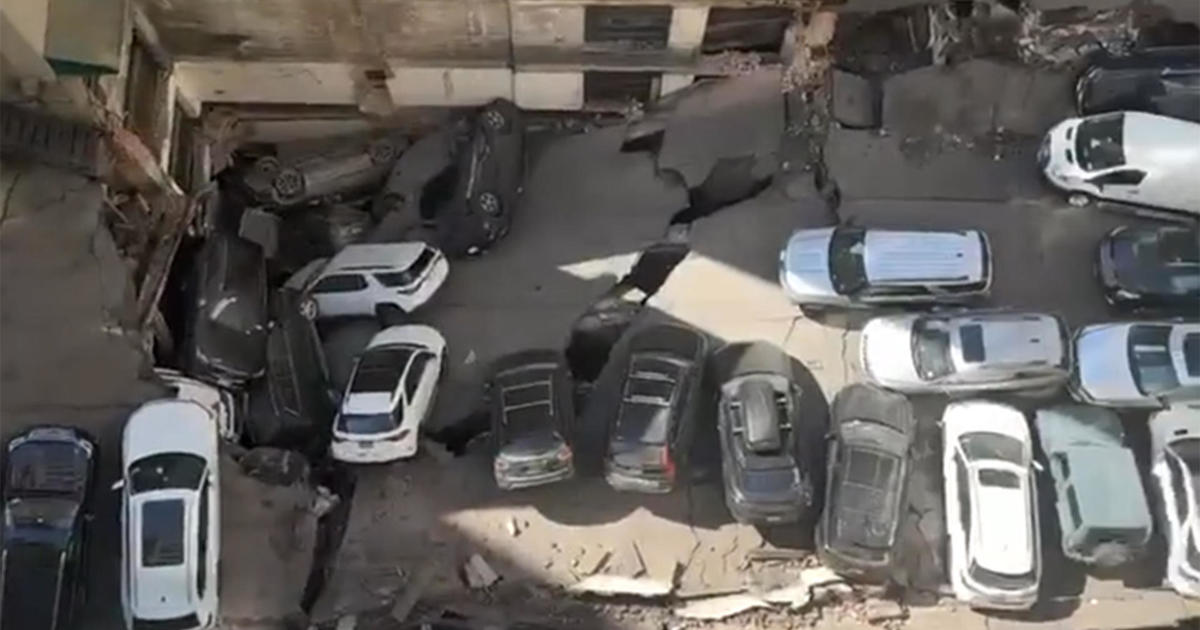NTSB: Engineer's Sleepiness Caused Deadly Bronx Metro-North Train Derailment
NEW YORK (CBSNewYork/AP) -- Another stinging report was issued on the Metro-North Railroad Tuesday, concluding this time that a sleep-deprived engineer nodded off at the controls of a Metro-North train just before taking a 30 mph curve at 82 mph, causing a derailment that killed four people and injured more than 70 in the Bronx.
As CBS 2's Don Champion reported, the National Transportation Safety Board report also announced the findings into the investigation of four other Metro-North accidents that occurred in New York and Connecticut in 2013 and 2014, and concluded that the railroad blew off safety concerns as a matter of habit.
EXTRA: Click Here For The Full NTSB Report
U.S. Sens. Charles Schumer (D-N.Y.) and Richard Blumenthal (D-Conn.) were furious about the findings.
"The MTA has blood on its hands," Blumenthal said.
"The NTSB report represents a horror-house of negligence resulting in injury, mayhem and death," added Schumer.
And as if the reaction from lawmakers did not sting enough, the findings alone by the NTSB also paint a nasty picture of the culture inside that nation's second largest commuter rail line.
"Two accidents on one railroad in a short period of time may be a coincidence," Hart said. "Five accidents in one railroad in less than a year begged the question -- how important was safety at Metro-North?"
The NTSB concluded that safety was not important at the Metro-North. In fact, the report found the railroad often failed to keep up with regular track maintenance -- opting to put it off.
The lack of detailed, visual track inspections were pinpointed in two of the accidents investigated.
"Maintenance and other ongoing efforts to address known safety issues should not have to wait for accidents in order to be implemented, but instead should be preventive measures and be completed before an accident occurs," said Acting NTSB Chairman Christopher Hart.
The NTSB also found that the railroad was seven years' behind schedule in replacing some track parts.
And as for the Bronx derailment near the Spuyten Duyvil station on the Hudson Line, the NTSB said engineer William Rockefeller's sleepiness was due to a combination of an undiagnosed disorder -- sleep apnea -- and a drastic shift in his work schedule, the NTSB said in the report.
"We determined that the cause of this tragic accident was the engineer's non-compliance with the 30 mph speed restriction because he had fallen asleep due to undiagnosed, severe obstructive sleep apnea," Hart said.
The agency said the railroad lacked a policy to screen engineers for sleep disorders, which also contributed to the Dec. 1, 2013 crash. It also said a system that would have automatically applied the brakes would have prevented the crash.
NTSB: Engineer's Sleepiness Caused Deadly Bronx Metro-North Train Derailment
The NTSB also took issue with the lack of a federal rule requiring railroads screen engineers for sleep disorders. Metro-North plans to start screening in December.
For its part, in the past year, Metro-North said it has already invested millions of dollars into new safety programs and infrastructure.
NTSB: Engineer's Sleepiness Caused Deadly Bronx Metro-North Train Derailment
"This would be almost a comedy of errors if it weren't so tragic,'' Schumer said. "It's clear these mistakes were avoidable.''
The NTSB had reported Rockefeller's sleep apnea in April, saying tests revealed it interrupted his sleep dozens of times each night.
Investigators said Rockefeller told them he had felt strangely "dazed'' right before the crash. But until Tuesday it had refrained from declaring his sleepiness as the cause of the crash.
It said that less than two weeks before the crash, Rockefeller had switched from a work day that began in late afternoon to one that began early in the morning. The board said that probably compounded his sleep problem.
It also noted that the technology known as positive train control was not in use at the time of the crash. Positive train control can automatically bring a train to a stop if it's exceeding a speed limit. Metro-North has said it is working to install the technology.
NTSB Issuing Likely Cause Of Deadly Bronx Metro-North Train Derailment
On the other accidents, the NTSB found:
- A May 17, 2013, derailment and collision in Bridgeport, Connecticut was caused by broken joint bars, which are used to join rails of different sizes. At least 65 people were injured. The board said Metro-North had deferred scheduled track maintenance and lacked "a comprehensive track maintenance program.''
- A track foreman who was fatally struck by a train in West Haven, Connecticut on May 28, 2013 was probably due to a mistake by a student rail traffic controller. The controller misunderstood some instructions and canceled the signals protecting the section of track the man was on, the NTSB said.
- In a similar accident in Manhattan on March 10, 2014, a Metro-North worker was killed by a train while trying to re-energize tracks that had been out of service for maintenance. The NTSB blamed the accident of briefings that poorly communicated which part of the track would be safe.
- The derailment of a freight train on Metro-North tracks in the Bronx on July 18, 2013, which caused no injuries, was caused by deteriorated concrete ties and other problems compounded by deferred maintenance, the NTSB said.
"Seeing this pattern of safety issues in a single railroad is troubling," Hart said. "The NTSB has made numerous recommendations to the railroad and the regulator that could have prevented or mitigated these accidents. But recommendations can only make a difference if the recipients of our recommendations act on them."
On Tuesday, the railroad's newly-hired president admitted Metro-North lost focus by putting on-time performance above everything else.
"It's been a continuous process to get this railroad back up where it belongs and keep the safety on it," said Metro-North President Joe Giulietti.
Giulietti said the report will be taken very seriously.
"We truly take to heart all the issues that have been stated,''Giulietti said. As an example, he said the railroad already has begun a test project on engineer sleep apnea that will be expanded.
In March, the Federal Railroad Administration issued a stinging report on Metro-North, saying the railroad let safety concerns slip while pushing to keep trains on time. Railroad executives pledged to make safety their top priority.
Since the incidents, the MTA has also hired David Mayer as the chief safety officer. His job is to work with Metro-North to keep a close eye on equipment and crews and make sure these crashes don't keep happening.
The NTSB said it will also issue safety recommendations designed to "improve railroad safety on Metro-North and other railroads."
Riders welcome changes.
"You have to have faith that the system work and that they're going to fix those things," said rider Gerald Watford.
The NTSB in the report also put blame in its report on the Federal Railroad Administration, for essentially failing to regulate Metro-North.
Check Out These Other Stories From CBSNewYork.com:
(TM and © Copyright 2014 CBS Radio Inc. and its relevant subsidiaries. CBS RADIO and EYE Logo TM and Copyright 2014 CBS Broadcasting Inc. Used under license. All Rights Reserved. This material may not be published, broadcast, rewritten, or redistributed. The Associated Press contributed to this report.)



